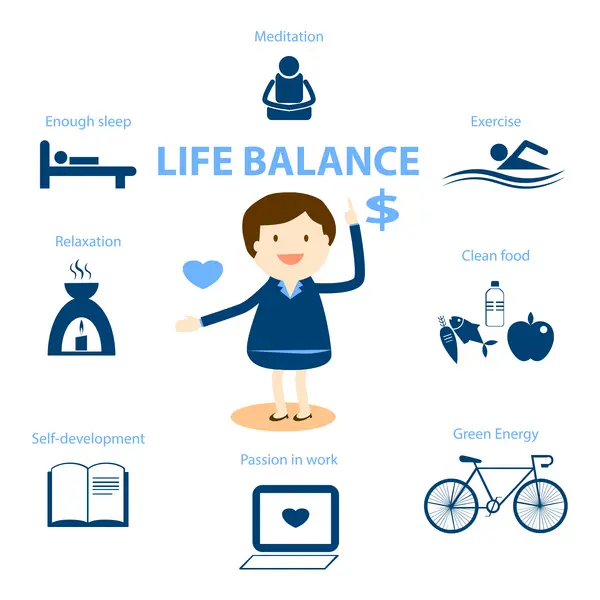Overemployment: The impact of working time flexibility on worker behaviour
Content and objectives

Various work (time) trends shape our digital age. On the one hand, employment relationships are becoming increasingly flexible, which can be seen, for example, in the form of remote work and atypical employment relationships. On the other hand, for many employees, high demands dominate with regard to their temporal presence and availability. The freedom to work is moving to the fore, while the 9-to-5 working time model is losing importance.
The research project investigates how different working time models affect the well-being of employees and their work experience. One sub-project deals with the measurement and correlates of individual overemployment. It investigates how overemployment is defined and experienced. In addition, possible causes of overemployment are analysed and the consequences of overemployment for the well-being and attitudes of employees are investigated.
Project goals
- Definition and theory development on results-only work environments and overemployment.
- Development of improved measuring instruments, e.g. on the topic of overemployment, for use in research and practice.
- Research into individual and organisational causes of overemployment.
- Identification of the effects of flexible work time models on the professional behaviour of different groups of people.
- Research into the relationships between work (time) conditions and subjective well-being, work performance (including extra role behaviour), job satisfaction and commitment to an employer.
- Development of practice-relevant implications to increase the satisfaction of the working population and organisational competitiveness.
Methodology
Qualitative methods, e.g. grounded theory, are used to gain detailed insight into the view of affected employees on working time issues. The main aim is to better understand the phenomenon of working time and its significance from the perspective of individuals. Quantitative methods are applied to formulate more precise statements about systematic relationships between working time (models) and subjective well-being, work performance, job satisfaction and the commitment to the organisation providing employment.
Social relevance and application of results
Working time occupies a substantial part of our lives. How it is structured is therefore not only a core question of human resource management, but also of how we want to shape our lifetimes. The issues of work flexibility, results-only work environments, overemployment and their correlates have implications for both employees and employers. Integral aspects include the identification of individual and organisational factors, which determine satisfaction with the working time and are of decisive importance. Thus, the research project makes a highly relevant contribution to the restructuring of a forward-looking framework for work.

Bamberg competencies
‘Working time’ is an interdisciplinary topic. The linking of psychological, sociological and management theories and research methods represents an innovative research approach that enables a differentiated analysis and thus provides points of contact for further interdisciplinary research.
Publications
Hiemer, J., & Andresen, M. (2019). “Because work time is lifetime” – Employees’ perceptions of individual overemployment, its causes and its consequences. Frontiers in Psychology, 10(1920). https://doi.org/10.3389/fpsyg.2019.01920
Hiemer, J., & Andresen, M. (2019). When less time is preferred: An analysis of the conceptualization and measurement of overemployment. Time & Society, 29(1),74-102. https://doi.org/10.1177/0961463X18820736 (1.809 Impact factor 2020)
Andresen, M., Domsch, M. E., & Cascorbi, A. (2007). Working unusual hours and their relationship to job satisfaction – A study of European maritime pilots. Journal of Labor Research, 28(4), 714-734.
Andresen, M. (2009). Das (Un-)Glück der Arbeitszeitfreiheit. Eine ökonomisch-psychologische Analyse und Bewertung. Gabler.
Hiemer, J. (2022). Between desirability and reality. Conceptualization, measurement, causes, and consequences of overemployment. In M. Andresen, & J. Volmer (Eds.), Schriftenreihe „Personalmanagement und Arbeits- und Organisationspsychologie“ (vol. 1). UBP.
Andresen, M. (2015). A look into the future: Is working time freedom apt to add value for different stakeholders? In M. Andresen & C. Nowak (Eds.), Human Resource Management Practices: Assessing Added Value (pp. 107-124). Springer. https://doi.org/10.1007/978-3-319-08186-1_7
Andresen, M., & Adam, L. (2015). Erwartungen an Arbeit, Freizeit und Karriere der Generation Y. In H. Fechtrup, W. Hoye, & T. Sternberg (Eds.), Arbeit – Freizeit – Muße – Über eine labil gewordene Balance (pp. 149-180). Lit.
Andresen, M., & Imhof, S. (2013). Die Messung des Glücks von Arbeitnehmern im Rahmen von Mitarbeiterbefragungen. In M. E. Domsch & D. H. Ladwig (Eds.), Handbuch Mitarbeiterbefragungen, (3rd ed., pp. 289-310). Springer.
Hiemer, J., & Andresen, M. (2017). The multidimensionality of overemployment: Conceptualization, measurement and impact on job satisfaction. In: Proceedings of the 17th conference of the European Academy of Management (EURAM), “Managing Knowledge: Making Knowledge Work”, Glasgow/UK, June 21-24, 2017.
Hiemer, J., & Andresen, M. (2016). Individual overemployment: Employees’ perception of the concept, causes, consequences and corrective actions. In: Proceedings of the 32nd EGOS Colloquium 'Organizing in the Shadow of Power', Naples/Italy, July 7-9, 2016.
Andresen, M., & Hristozova, E. (2004). Does Airbus’ working time account lead to flexicurity? An analysis of hidden costs and benefits. In: Proceedings of the IIRA 2004, 7th European Congress “The Future of Work in Europe”, Lisbon/Portugal, September 7-11, 2004.
Andresen, M., Hristozova, E., & Lieberum, U. (2004). Hidden costs and benefits analysis of flexible working hours: The case of Airbus Germany. In: Proceedings of the European Academy of Management EURAM, 4th Annual Conference, “Governance in Managerial Life”, St. Andrews/UK, May 5–9, 2004.
Andresen, M. (2015). Ergebnisse, nicht Zeit messen. Personalmagazin, 03/15, pp. 18-20.
Andresen, M., & Dochtmann, G. (2015). Arbeitszeitfreiheit: Anforderungen an die Mitarbeiterführung. HR Performance, 01/2015, pp. 32-33.
In the media:
- Schluss jetzt! Überstunden
Interview, text written by Kathrin Halfwassen, impulse, 02/2024, p. 42-47. - Kürzer, besser, glücklicher. Sechs Stunden Arbeit am Tag statt acht – bei gleichem Gehalt: Kann das gutgehen?
Interview, Frankfurter Allgemeine Sonntagszeitung, No. 1, 05.01.2020, column „Beruf & Chance“, p. 43. - Brauchen Top-Manager einen Gesundheitscoach? Interview, 21.09.2015, http://www.haufe.de/personal/hr-management/gesundheitsmanagement-gesundheitscoach-fuer-topmanager_80_320176.html
- Interview zur Arbeitszeitfreiheit – „Schöpferische Perioden ausschöpfen" Interview, wirtschaft & weiterbildung, 02.01.2015, Rubrik aktuell, S. 9.
- "Schöpferische Perioden ausschöpfen – egal wann" Interview zur Arbeitszeitfreiheit, 04.12.2014, https://www.haufe.de/personal/hr-management/interview-arbeitszeitfreiheit-schoepferische-perioden-ausschoepfen_80_284788.html
- „Führung in Teilzeit ist noch nicht etabliert“ Interview, Südkurier, Nr. 270, 70. Jahr, 22.11.2014
- Maike Andresen über Arbeitszeitfreiheit. „Hauptsache, die Ergebnisse stimmen“. Interview, Text verfasst durch Sylvia Jumpertz, managerSeminare, Heft 200, November 2014, S. 12.
- „Man läuft Gefahr, sich auszubeuten“. Mehr Freiheit oder mehr Überstunden? Bamberger Forscherin über die flexible Gestaltung der Arbeitszeit. Interview, Text verfasst durch Desirée Brenner, Donaukurier vom 11.09.2014
- Die neue Arbeitswelt Text verfasst durch Barbara Kerbel, deutsch perfekt, Heft 7, 2010, 54-57.
- Ära der Unsicherheit Text verfasst durch S. Kretz, M.U. Müller, G. Repinski, J. Tietz, Der Spiegel, Heft 12, 2010, 83-94.
